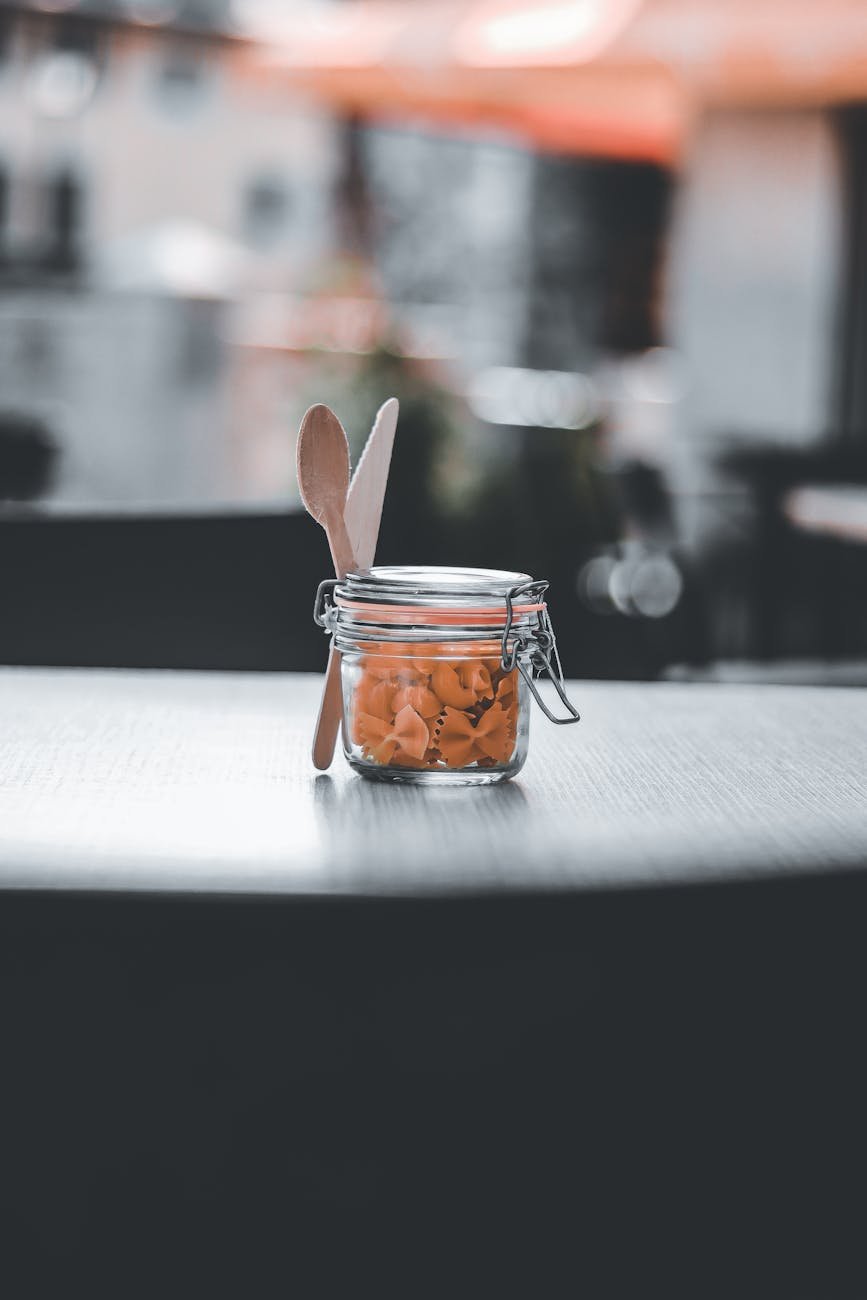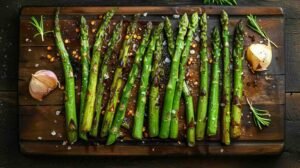Cooking Asparagus: A Guide to Perfection
The Art of Cooking Asparagus
Cooking asparagus to perfection is an art that combines technique with an understanding of this vegetable’s unique qualities. Asparagus, a beloved spring vegetable, is revered for its vibrant green color, crisp texture, and subtle, earthy flavor. Whether one is preparing a simple side dish or a feature ingredient in a gourmet recipe, knowing how to cook asparagus properly can make all the difference in a meal.
The key to mastering asparagus is recognizing the importance of cooking time and method. Asparagus stems vary in thickness and therefore may require different cooking durations to reach the ideal tenderness. The goal is to achieve a tender yet firm texture that highlights asparagus’s natural flavor without it becoming too soft or mushy.
For those new to cooking asparagus, or even seasoned home chefs looking to refine their technique, it’s vital to start with the basics and experiment from there. Ensuring that the asparagus is fresh and properly prepared by trimming the woody ends is the first step to a delicious outcome. For more on the initial steps, check out our comprehensive guide on how can you cook asparagus?.
Different Methods to Cook Asparagus
Asparagus is a versatile vegetable that can be cooked using various methods, each bringing out its unique qualities and flavors. Below are some of the most popular methods, along with approximate cooking times:
| Cooking Method | Approximate Cooking Time |
|---|---|
| Boiling | 3-5 minutes |
| Steaming | 3-5 minutes |
| Sautéing | 5-7 minutes |
| Grilling | 5-10 minutes |
| Roasting | 10-15 minutes |
| Baking (wrapped in foil) | 15-20 minutes |
- Boiling is a quick and straightforward method where asparagus is cooked in salted boiling water until it becomes tender.
- Steaming retains more nutrients and keeps the asparagus crisp. It involves cooking the asparagus over boiling water in a steamer basket.
- Sautéing in a pan with a bit of oil or butter allows for a more concentrated flavor and a slightly crisp texture.
- Grilling imparts a smoky flavor and grill marks that add a delightful charred taste and appearance.
- Roasting brings out the natural sweetness of asparagus through caramelization, resulting in a tender yet slightly crisp texture.
- Baking in foil is a method that steams the asparagus in its own moisture, often with added seasonings for flavor.
Each method has its own set of nuances and may require different seasoning or preparation techniques to enhance the asparagus’s flavor. It’s also crucial to consider the size and thickness of the asparagus spears when determining the exact cooking time. For a deeper look into each method and tips for perfection, visit our detailed exploration of how can you cook asparagus?.
Whether you prefer your asparagus with a bite or on the softer side, mastering these cooking methods will help you serve up this nutritious vegetable in a way that will impress any asparagus aficionado.
How to Tell When Asparagus is Cooked
Knowing when asparagus is cooked to perfection can be the difference between a delicious, crisp side dish and a mushy, unappealing one. This section provides cues to help you determine when asparagus is cooked just right.
Visual Cues
Asparagus changes in color and texture when it’s cooked. Look for a vibrant green hue, which indicates that the asparagus is done. If you’re roasting or grilling, you might see some charred or browned spots, which can add a pleasant, smoky flavor. However, if the spears become too dark or start to look shriveled, they may be overcooked.
| Cooking Method | Visual Cue |
|---|---|
| Boiling/Steaming | Bright green color |
| Roasting | Green with light browning |
| Grilling | Grill marks and slight charring |
Another visual clue is the asparagus’s stance. When lifted at one end, perfectly cooked asparagus will droop slightly but still hold some firmness. If it flops heavily, it’s likely overdone. For more on the different methods to cook asparagus, check out our guide on how can you cook asparagus?
Texture Test
The ultimate test for doneness is texture. Use a fork or the tip of a knife to pierce the thickest part of the spear. It should enter with little resistance, but the asparagus should not be so soft that it falls apart. There should be a slight crunch when you bite into it, indicating it’s cooked through yet still tender-crisp.
| Cooking Method | Desired Texture |
|---|---|
| Boiling/Steaming | Tender-crisp |
| Roasting | Slightly firmer outside |
| Grilling | Tender with a bit of crunch |
Performing a quick taste test is also recommended. Remember that asparagus will continue to cook slightly after it’s removed from the heat due to residual heat, especially if it’s served on a warm plate or mixed with hot ingredients. For additional guidance on preparing asparagus, including cooking times and techniques, visit how can you cook asparagus?
By monitoring the visual cues and testing the texture, you can ensure your asparagus is cooked perfectly each time. Whether you prefer a crunchier bite or a softer spear, these tests will help you achieve your desired level of doneness.
Tips for Perfectly Cooked Asparagus
Cooking asparagus to perfection requires attention to detail and an understanding of how this delicate vegetable transforms with heat. Here are some tips to help ensure that asparagus turns out tender, flavorful, and just right.
Avoid Overcooking
Asparagus is best enjoyed when it’s cooked to be tender yet still retains a bit of crispness. Overcooking can result in a mushy texture and diminished flavor. To prevent this:
- Watch the clock and use a timer. Asparagus typically takes between 3 to 5 minutes to cook, depending on the thickness of the stalks.
- Plunge the asparagus into an ice water bath after cooking to halt the cooking process immediately.
- Keep in mind that asparagus will continue to cook even after it’s been removed from the heat source due to residual heat.
For a quick reference on cooking times for different methods, refer to our guide on how can you cook asparagus?.
| Method | Thin Stalks | Medium Stalks | Thick Stalks |
|---|---|---|---|
| Boiling | 3 minutes | 4 minutes | 5 minutes |
| Steaming | 3-4 minutes | 4-5 minutes | 5-6 minutes |
| Roasting | 10 minutes | 15 minutes | 20 minutes |
| Grilling | 5 minutes | 7 minutes | 10 minutes |
Remember that these times are approximate and you should always check the asparagus for doneness during cooking.
Enhancing Flavor with Seasonings
Asparagus has a naturally delicious flavor that can be enhanced with the right seasonings. Here are some tips to elevate the taste:
- Season generously with salt and pepper before cooking to enhance the natural flavors of the asparagus.
- Drizzle with olive oil before roasting or grilling for a richer flavor.
- Squeeze fresh lemon juice over the cooked asparagus for a bright, citrusy note.
- Add minced garlic or shallots to the pan when sautéing for an aromatic twist.
- Consider herbs such as thyme, parsley, or dill for additional layers of flavor.
Experiment with different seasonings to find the combination that you prefer. For more ideas on how to season asparagus, explore our article on how can you cook asparagus?.
By following these tips, you will be well on your way to serving perfectly cooked asparagus that is both delicious and visually appealing. Whether you prefer your asparagus with a bite or tender throughout, understanding the balance between cook time and flavor enhancement will ensure that your vegetable dish is a success.
Serving and Enjoying Asparagus
Once asparagus is cooked to perfection, serving it in an appetizing way and pairing it with flavors that enhance its natural taste can transform a simple dish into a culinary delight.
Presentation Tips
The presentation of asparagus can greatly influence the overall dining experience. For a visually appealing dish, consider the following tips:
- Arrange Neatly: Line up the spears on a platter with the tips facing the same direction for a uniform and elegant appearance.
- Garnish Wisely: A sprinkle of finely chopped herbs, such as parsley or chives, adds a splash of color and freshness to the dish.
- Drizzle with Dressing: A light drizzle of a flavorful dressing, like balsamic reduction or lemon vinaigrette, can enhance the visual appeal and taste.
- Add Crunch: Top with slivers of almonds, breadcrumbs, or parmesan crisps for added texture.
Remember, the key to an enticing presentation is simplicity and highlighting the natural beauty of the asparagus.
Pairing Asparagus with Complementary Flavors
Asparagus has a unique, slightly earthy flavor that pairs well with a variety of ingredients. Here are some suggestions for complementary flavors that can elevate your asparagus dish:
- Citrus: Lemon, lime, and orange bring out the brightness in asparagus.
- Cheese: Grated Parmesan, crumbled feta, or shaved Pecorino add a savory touch.
- Nuts: Toasted pine nuts, almonds, or walnuts provide a nutty contrast.
- Herbs: Fresh dill, tarragon, or basil can complement the vegetal notes of asparagus.
Pairing asparagus with the right flavors not only enhances the taste but also creates a harmonious dish that is sure to impress. For various methods on preparing asparagus to achieve the best flavor and texture, refer to our guide on how can you cook asparagus?.
By focusing on presentation and pairing, asparagus can be the star of any meal, from a casual family dinner to an elegant gathering. With these tips, you can serve and enjoy asparagus in ways that will delight your palate and showcase your culinary skills.



